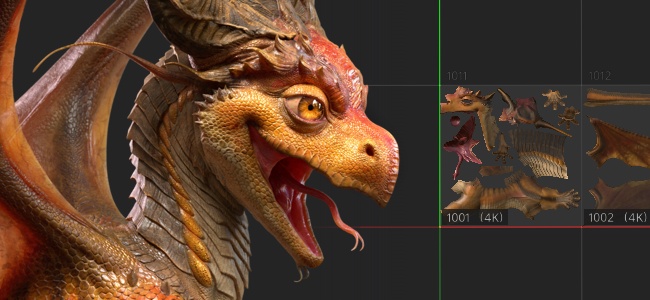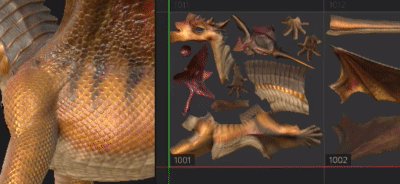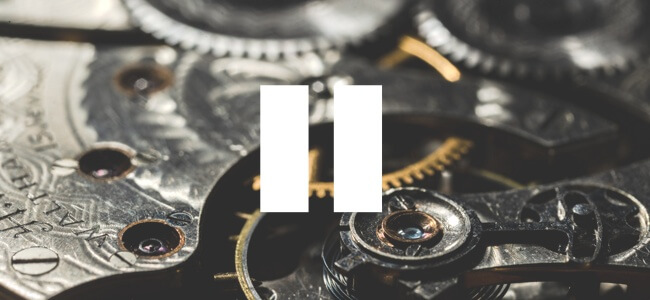Adobe releases Substance Painter 2020.2

Adobe has released Substance Painter 2020.2. the latest version of its 3D texture painting software, adding a long-awaited feature: the ability to paint across UDIM tiles.
The update also adds the option to pause the Substance Painter engine while working, makes a number of improvements to overall performance, and reduces the size of project files that the software generates.
Paint seamlessly across UDIM texture tiles inside Substance Painter
The headline feature in Substance Painter 2020.2 is one that users have been asking for for a long time: seamless multichannel painting across UDIM tiles.
Adobe originally previewed the functionality a year ago during its Substance Days user event at Siggraph 2019, but it has taken longer than expected to make it to a public release.

The changes extend Substance Painter’s existing support for the UDIM UV layout format used in applications like Mari, making it possible to paint seamlessly across separate tiles within a texture set.
Adobe says that it plans to support the native tile naming conventions of other applications that use tiled UV layouts, such as Mudbox and ZBrush, in future releases.
New options for displaying, masking and baking UV tiles
Artists working with projects that use UV tiles can now import textures as image sequences, with Substance Painter automatically ingesting and organising the entire texture set.

The UV tiles are then displayed in the 2D viewport in a new grid view, with the option to set the texture resolution of each tile individually.
The update also adds a new UV Tile Mask system to Substance Painter’s layer stack: a type of secondary mask for texture layers that forces the software to discard the computation of specific UV tiles.
Adobe says that masking UV tiles should improve painting performance on complex projects. Users can also hide masked tiles in the viewport, making it easier to access every part of the mesh.
Substance Painter’s texture bakers have been updated to support UV Tiles, with users able to specifiy which tiles and texture sets to bake, and to include UV tile numbers in filenames.
You can read a fuller overview of the new workflow on Adobe’s blog.
Pause the Substnce Painter engine to improve performance
The other changes in Substance Painter 2020.2 are primarily performance improvements.
Exporting textures from projects with “many texture sets or complex layer stacks” is “up to … 5 times faster”, and there are unquantified speed improvements when opening projects and during incremental saves.
In addition, users can now pause Substance Painter engine while working, meaning that subsequent viewport updates, texture processing and paint strokes are registered, but not computed.
Adobe says that the feature is intended to make Substance Painter more responsive when working on projects with complex layer stacks, at the cost of removing visual feedback.

Users can effectively queue up a lot of changes, then unpause and compute them all in one go.
Changes to reduce the size of Substance Painter project files
In addition, the size of the project files that Substance Painter generates has been reduced.
The software’s ambient occlusion and curvature bakers now export greyscale texture maps, rather than RGB maps: something that Adobe says can reduce project size by “20% to 60%”.
The default dilation and diffusion settings when baking textures have also been updated to reduce file sizes.
Pricing and availability
Substance Painter 2020.2 is available for Windows 8+, CentOS 7.0/Ubuntu 16.04+ Linux and macOS 10.12+.
Subscriptions to all of Adobe’s Substance tools cost $19.90/month or $219/year for artists and studios earning under $100,000/year; and $99.90/month or $990/year for other users.
Perpetual Indie licences are now only available via Steam, and cost $149.99.
Source: Adobe

熱門頭條新聞
- Mumbai Comic Con 2025 to Host Indie Game Utsav
- Hirogami, an upcoming origami platformer from Bandai Namco Studios Singapore
- FUZE, the Social Platform for Gaming Communities, is Now Available on PC
- Puella Magi Madoka Magica Magia Exedra – New Opening Animation!
- The New Era of Gaming Comms
- Autodesk announces Betsy Rafael to step down from Board of Directors
- Bandit Trap Launches Public Beta, New Trailer Revealed at Future Games Show Spring Showcase 2025
- Hidalgo A Don Quixote’s Adventure Kickstarter is Now LIVE, a Game Inspired by the world’s First and Most Sold Modern Novel
